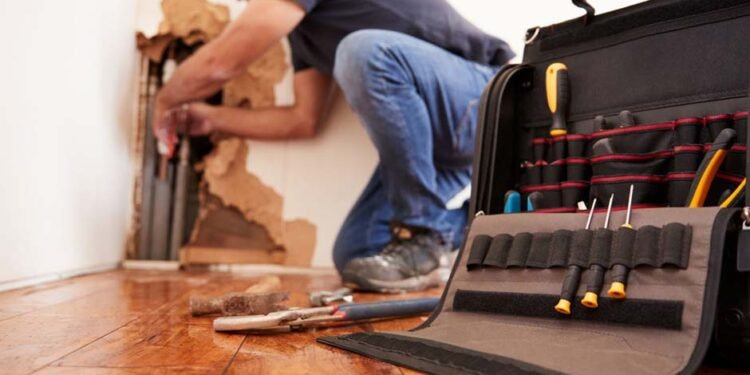Floods are natural disasters that can cause extensive damage to homes and properties. The cleanup process is one of the most challenging aspects of dealing with a flood. Effective flood cleanup requires thorough planning, proper equipment, and a systematic approach to restore your home to a safe and livable condition. We’ll discuss about DrierHomes essential steps and tips for flood cleanup, from assessing the damage to restoring your home.
Guiding You Through Flood Cleanup: Assessing Damage to Home Restoration
Assessing the Damage
The first step in flood cleanup is assessing the extent of the damage. Begin by checking for structural damage, such as cracks in the walls or foundation, and evaluate the stability of the building. Take note of any electrical hazards or gas leaks, as these pose serious safety risks. Document the damage by taking photographs or videos, which will be necessary for insurance claims. Make a list of damaged items and prioritize tasks based on urgency.
Safety Precautions
Safety should be your top priority during flood cleanup. Before entering the flooded area, ensure the electricity and gas supply are turned off to prevent electrical shocks or fires. Wear protective gear such as rubber boots, gloves, and a mask to protect yourself from contaminated water and mold. Be cautious of slippery surfaces and unstable structures. If the floodwater contains sewage or chemicals, consider hiring professionals to clean it to avoid health risks.
Water Removal and Drying
The next step is to remove standing water from your home. Use pumps, wet-dry vacuums, or buckets to drain the water. Open windows and doors to facilitate ventilation and speed up the drying process. Use fans, dehumidifiers, and heaters to thoroughly dry out the affected areas. Pay special attention to carpets, upholstery, and drywall; they can harbor moisture and promote mold growth. Dispose of any water-damaged items that cannot be salvaged.
Cleaning and Disinfecting
After removing the water, thoroughly clean and disinfect all surfaces and belongings. Use a mixture of soap and water or a commercial disinfectant to clean floors, walls, and furniture. Pay attention to areas submerged in water, as they may harbor bacteria and pathogens. Wash and disinfect clothing, bedding, and other fabrics. Consider hiring professionals for deep cleaning and mold remediation to ensure a thorough and safe cleanup.
Mold Prevention and Remediation
Mold growth is a common problem after a flood. Prevent mold by thoroughly drying and disinfecting all surfaces. Use mold-resistant paints and materials for repairs and renovations. If mold is already present, hire professionals to remediate it safely. Keep humidity levels low and use dehumidifiers to prevent mold regrowth. Monitor your home regularly for signs of mold and address any issues promptly.
Restoring and Repairing
Once the cleanup and disinfection are complete, it’s time to focus on restoring and repairing your home. Replace damaged drywall, insulation, and flooring as needed. Repair or replace electrical and plumbing systems destroyed by the flood—paint walls and ceilings with mold-resistant paint to prevent future mold growth. Consider upgrading to flood-resistant materials and waterproofing your home to minimize the risk of future floods.
Insurance Claims and Documentation
Keep detailed records of all flood cleanup and repair expenses, including receipts, invoices, and communication with insurance companies. Review your insurance policy to understand coverage limits and exclusions for flood damage. File a claim immediately and provide the necessary documentation to expedite the process. Work with your insurance adjuster to ensure you receive fair compensation for your losses.
Community Resources and Support
During a flood cleanup, don’t hesitate to seek help from community resources and support services. Contact local government agencies, disaster relief organizations, and community groups for cleanup, temporary housing, and financial aid assistance. Take advantage of FEMA grants, low-interest loans, and counseling services to help you recover from a flood’s emotional and economic impact.
Flood Preparedness and Prevention
While dealing with flood cleanup is crucial, focusing on flood preparedness and prevention is equally important to minimize future risks. Start by understanding your property’s flood risk and taking preventive measures such as installing flood barriers, sump pumps, and backflow valves. Keep gutters and drains clear of debris to prevent water buildup. Create an emergency preparedness plan that includes evacuation routes, emergency contacts, and essential supplies. Stay informed about weather forecasts and flood warnings to take timely action.
Emotional and Mental Health Support
The aftermath of a flood can affect your emotional and mental well-being. It’s normal to experience feelings of stress, anxiety, and overwhelm during the cleanup and recovery process. To cope with these emotions, seek support from family, friends, or mental health professionals. Practice self-care by taking breaks, getting enough rest, and engaging in activities that bring you comfort. Join support groups or attend counseling sessions to connect with others who have experienced similar challenges.
Environmental Considerations
Flood cleanup has environmental implications that should be addressed responsibly. To prevent pollution, dispose of hazardous materials such as chemicals, batteries, and electronics at designated recycling centers. Avoid dumping contaminated water or debris into natural water bodies. Use eco-friendly cleaning products and practices to minimize environmental impact. Consider implementing sustainable measures such as rain gardens, permeable pavement, and green infrastructure to reduce flood risk and protect the environment.
Flood cleanup is a challenging and complex process that requires careful planning and execution. Following these essential steps and tips can effectively restore your home after water damage and minimize the risk of future floods. Remember to prioritize safety, document the damage, and seek professional help. With patience and perseverance, you can overcome the challenges of flood cleanup and rebuild a safe and resilient home.












